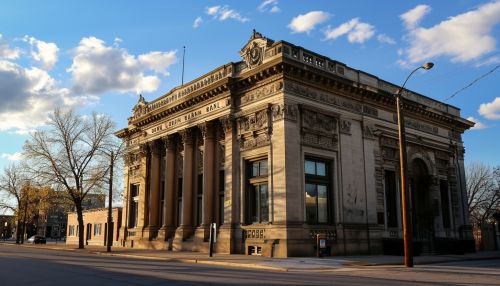Banking in the United States
History
The history of banking in the United States is a story of evolution and progress. From the establishment of the first bank in 1781 to the modern, sophisticated financial institutions of today, the banking industry has undergone significant changes and faced numerous challenges.


Early Banking (1781-1863)
The first bank in the United States, the Bank of North America, was chartered in 1781 by the Continental Congress to fund the American Revolutionary War. In 1791, the First Bank of the United States was established by Congress to handle the federal government's financial needs. However, its charter was not renewed in 1811 due to opposition from state banks.
National Banking Act (1863)
The National Banking Act of 1863 was enacted to create a national banking system, establish a national currency, and fund the Civil War. It also provided for the chartering of national banks and required them to purchase U.S. government securities.
Federal Reserve System (1913)
The Federal Reserve System was established in 1913 to provide the country with a safe, flexible, and stable monetary and financial system. It is the central bank of the United States and has broad powers to control money supply and regulate banks.
Banking Act of 1933
The Banking Act of 1933, also known as the Glass-Steagall Act, was enacted in response to the Great Depression. It established the Federal Deposit Insurance Corporation (FDIC) to insure bank deposits and separated commercial banking from investment banking.
Deregulation and the Financial Crisis (1980s-2008)
The 1980s and 1990s saw significant deregulation in the banking industry, culminating in the repeal of the Glass-Steagall Act in 1999. However, the loosening of regulations has been blamed for the financial crisis of 2008, which led to the collapse of several major banks and the worst economic downturn since the Great Depression.
Modern Banking
Today, the U.S. banking system is one of the most complex and sophisticated in the world, with a wide variety of institutions serving diverse needs. The industry is heavily regulated by several federal agencies, including the Federal Reserve, the FDIC, and the Office of the Comptroller of the Currency.
